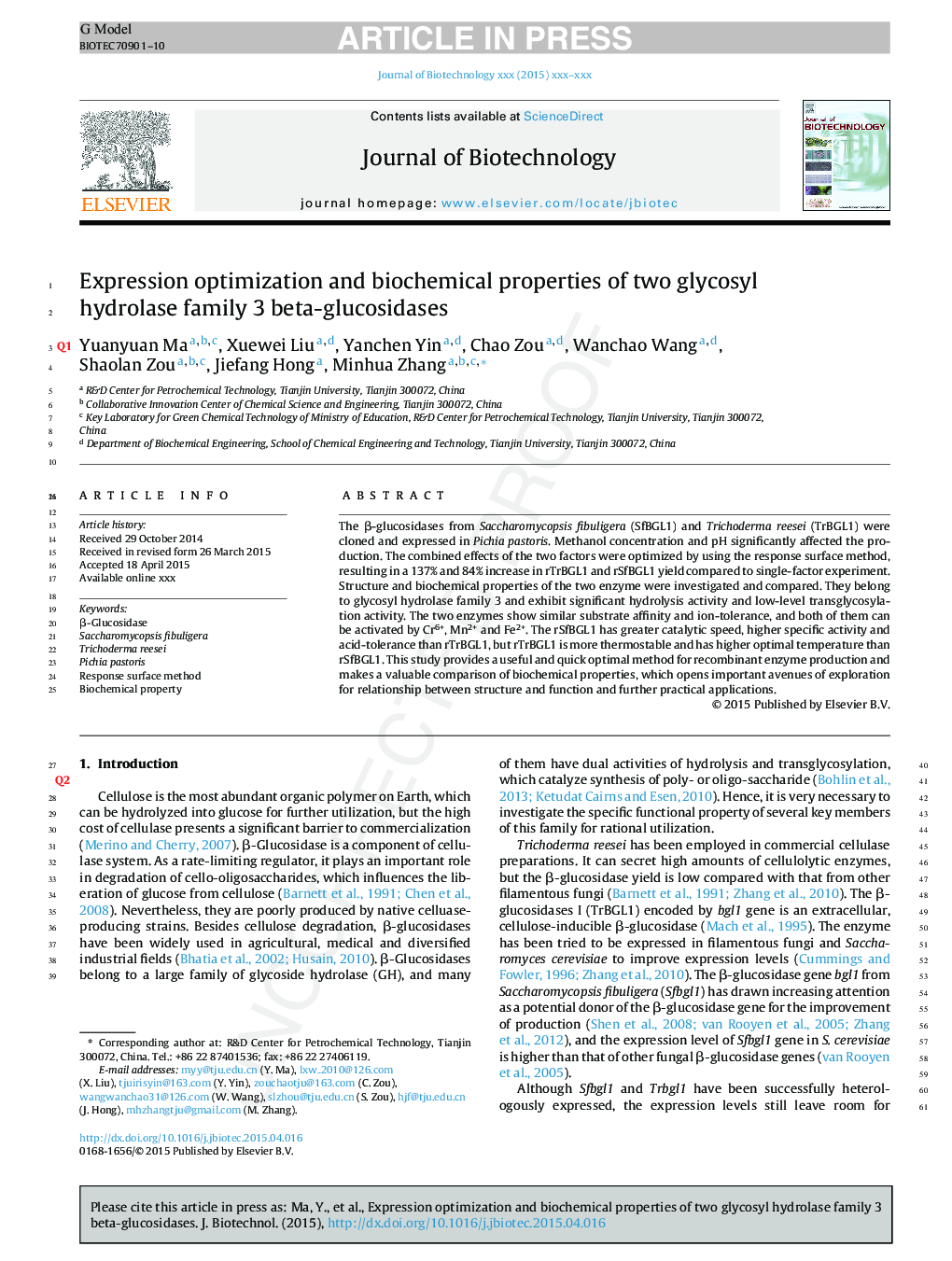| Article ID | Journal | Published Year | Pages | File Type |
|---|---|---|---|---|
| 6491099 | Journal of Biotechnology | 2015 | 10 Pages |
Abstract
The β-glucosidases from Saccharomycopsis fibuligera (SfBGL1) and Trichoderma reesei (TrBGL1) were cloned and expressed in Pichia pastoris. Methanol concentration and pH significantly affected the production. The combined effects of the two factors were optimized by using the response surface method, resulting in a 137% and 84% increase in rTrBGL1 and rSfBGL1 yield compared to single-factor experiment. Structure and biochemical properties of the two enzyme were investigated and compared. They belong to glycosyl hydrolase family 3 and exhibit significant hydrolysis activity and low-level transglycosylation activity. The two enzymes show similar substrate affinity and ion-tolerance, and both of them can be activated by Cr6+, Mn2+ and Fe2+. The rSfBGL1 has greater catalytic speed, higher specific activity and acid-tolerance than rTrBGL1, but rTrBGL1 is more thermostable and has higher optimal temperature than rSfBGL1. This study provides a useful and quick optimal method for recombinant enzyme production and makes a valuable comparison of biochemical properties, which opens important avenues of exploration for relationship between structure and function and further practical applications.
Keywords
Related Topics
Physical Sciences and Engineering
Chemical Engineering
Bioengineering
Authors
Yuanyuan Ma, Xuewei Liu, Yanchen Yin, Chao Zou, Wanchao Wang, Shaolan Zou, Jiefang Hong, Minhua Zhang,
